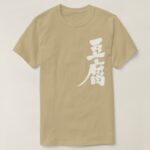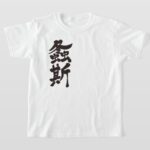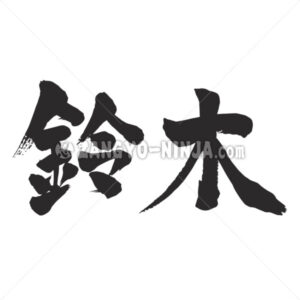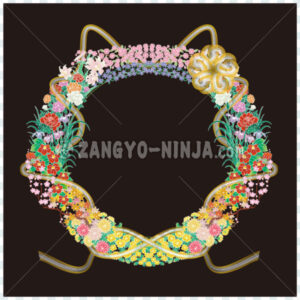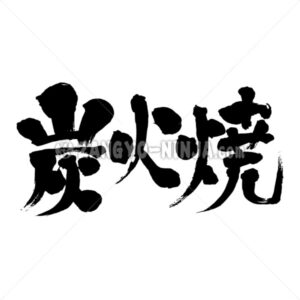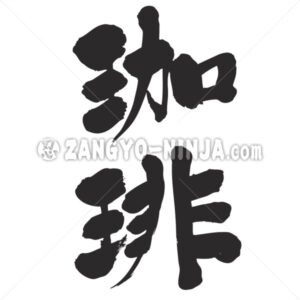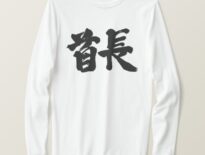
[Kanji] Japanese food T-shirt
A meal that combines ingredients such as fish and vegetables that have been naturally grown in Japan using traditional methods, mainly rice and soup, pickles, and side dishes. There is no clear definition of the content of the meal, and the most basic meal is called Ichiju Sansai. This is a dish with 3 kinds of side dishes and 1 kind of soup, which is rice and pickles, 1 main dish such as fish and tempura, and 2 side dishes cooked mainly with vegetables. A lot of water is used for cooking, and it is used in combination many times from the stage where cooking methods such as boiling, steaming, and baking are used. When eating raw fish and vegetables, one of the features is that they can be finely finished using special cooking tools.
The name Japanese cuisine was used to contrast with Western cuisine by Taijiro Ishii’s “The Complete Japanese Cooking Method” published in 1898 (Meiji 31), and it is said that it has taken root. It is uncertain when the name Japanese food has been used, and it is thought that it will be even later than the name Japanese food.
In 2013 (Heisei 25), Japanese food was registered as “Japanese food-Japanese traditional food culture” in the UNESCO World Intangible Cultural Heritage. The meaning of Japanese food in this registration is a comprehensive summary of “the practice of food that Japanese people who respect nature have formed”, and has the following four characteristics. (1) A variety of foodstuffs that have been nurtured in the rich nature of the land, sea, mountains, and villages that are long from north to south, and the development of techniques and tools for cooking them. Healthy eating habits that take advantage of the delicious taste of dashi and refrain from animal fats and oils, (3) Use of vessels and furnishings, including cooking that harmonizes the beauty of nature and the transition of the four seasons with meals A culture that is closely related to food and year-round events that respect the blessings of nature, such as the aesthetic sense that appears in (4) New Year and rice planting, is inherited, and the bonds between the family and the community are protected. The registration of World Intangible Cultural Heritage includes not only cooking and cooking methods, but also family and social customs.
Japanese says Wa-Shoku.
A meal that combines ingredients such as fish and vegetables that have been naturally grown in Japan using traditional methods, mainly rice and soup, pickles, and side dishes. There is no clear definition of the content of the meal, and the most basic meal is called Ichiju Sansai. This is a dish with 3 kinds of side dishes and 1 kind of soup, which is rice and pickles, 1 main dish such as fish and tempura, and 2 side dishes cooked mainly with vegetables. A lot of water is used for cooking, and it is used in combination many times from the stage where cooking methods such as boiling, steaming, and baking are used. When eating raw fish and vegetables, one of the features is that they can be finely finished using special cooking tools.
The name Japanese cuisine was used to contrast with Western cuisine by Taijiro Ishii’s “The Complete Japanese Cooking Method” published in 1898 (Meiji 31), and it is said that it has taken root. It is uncertain when the name Japanese food has been used, and it is thought that it will be even later than the name Japanese food.
In 2013 (Heisei 25), Japanese food was registered as “Japanese food-Japanese traditional food culture” in the UNESCO World Intangible Cultural Heritage. The meaning of Japanese food in this registration is a comprehensive summary of “the practice of food that Japanese people who respect nature have formed”, and has the following four characteristics. (1) A variety of foodstuffs that have been nurtured in the rich nature of the land, sea, mountains, and villages that are long from north to south, and the development of techniques and tools for cooking them. Healthy eating habits that take advantage of the delicious taste of dashi and refrain from animal fats and oils, (3) Use of vessels and furnishings, including cooking that harmonizes the beauty of nature and the transition of the four seasons with meals A culture that is closely related to food and year-round events that respect the blessings of nature, such as the aesthetic sense that appears in (4) New Year and rice planting, is inherited, and the bonds between the family and the community are protected. The registration of World Intangible Cultural Heritage includes not only cooking and cooking methods, but also family and social customs.
Japanese says Wa-Shoku.
About this T-shirt
A shirt without a collar. It is called a T-shirt because it looks like a "T" when the arms are spread out. As most people know, it is a standard clothing that there is no one in the world who has never worn it. You can choose men's or women's, long-sleeve T-shirts and hoodies, and you can choose the size and color as much as you want.
・Unisex, Men’s, Woman’s or Kids T-shirts
・variety sizes
・rich color varieties
・100% cotton (Blends poly by manufacturer)
・Double-needle hemmed sleeves and bottom
・Machine wash cold
・Unisex, Men’s, Woman’s or Kids T-shirts
・variety sizes
・rich color varieties
・100% cotton (Blends poly by manufacturer)
・Double-needle hemmed sleeves and bottom
・Machine wash cold
You can change the color and font size.
How to Personalize?


